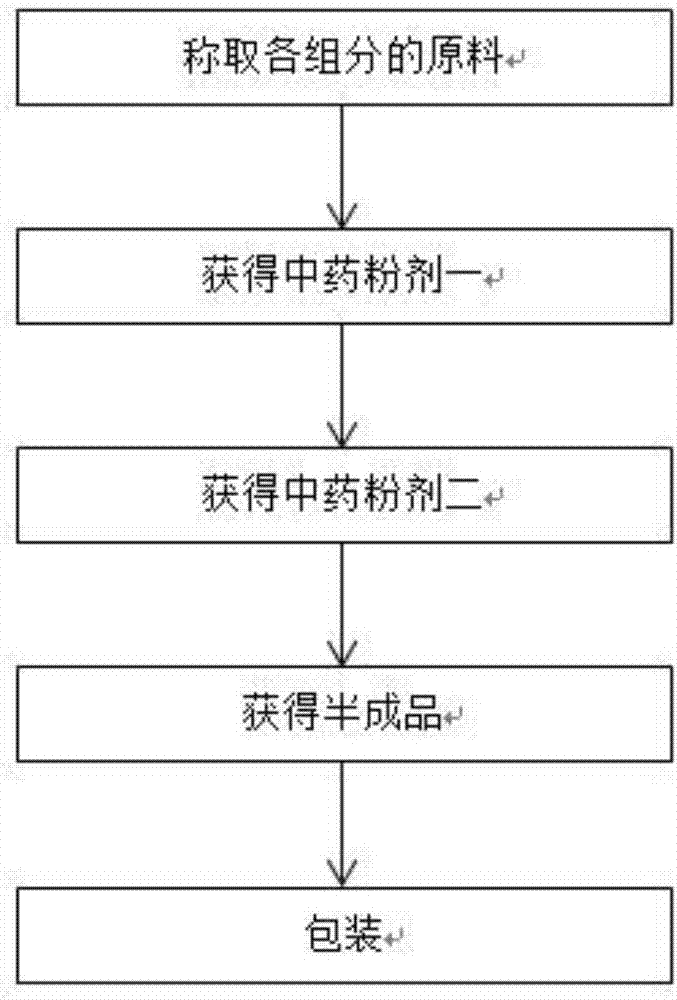Low-residue organic pesticide based on traditional Chinese medicinal materials and preparation method
An organic pesticide, low-residue technology, applied in the agricultural field, can solve problems such as human body damage and physical harm, and achieve the effects of reducing toxicity, long-term insect repellent, and promoting growth.
- Summary
- Abstract
- Description
- Claims
- Application Information
AI Technical Summary
Problems solved by technology
Method used
Image
Examples
Embodiment 1
[0026] Low-residue organic pesticides based on Chinese herbal medicines, including tetramethrin, saponin leaves, neem bark, toosendan, tripterygium twig, arborvitae leaves, sojunzi, pepper, cnidium, Kochia, rhubarb, mulberry leaves, Polygonum multiflorum and pine needles.
[0027] Further, the raw materials are composed according to parts by weight: 8 parts of Tetramethrin, 20 parts of Saponaria leaves, 10 parts of Neem bark, 10 parts of Toosendan, 2 parts of Tripterygium wilfordii, 7 parts of Arborvitae leaves, 1 part of Gentleman , 2 parts of pepper, 7 parts of cnidium, 10 parts of Kochia scoparia, 7 parts of rhubarb, 2 parts of mulberry leaves, 1 part of Polygonum multiflorum, 10 parts of pine needle slices.
[0028] The preparation method of the low-residue organic pesticide based on Chinese herbal medicines is carried out as follows:
[0029] Step 1: taking the raw materials of each component;
[0030] Step 2: Stir and grind saponin leaves, neem bark, toosendan, tripter...
Embodiment 2
[0038] Low-residue organic pesticides based on Chinese herbal medicines, including tetramethrin, saponin leaves, neem bark, toosendan, tripterygium twig, arborvitae leaves, sojunzi, pepper, cnidium, Kochia, rhubarb, mulberry leaves, Polygonum multiflorum and pine needles.
[0039] Further, the raw materials are composed according to parts by weight: 10 parts of Tetramethrin, 30 parts of Saponaria leaves, 10 parts of Neem Bark, 10 parts of Toosendan, 2 parts of Tripterygium wilfordii, 7 parts of Arborvitae leaves, 1 part of Gentleman , 3 parts of pepper, 7 parts of cnidium, 10 parts of Kochia scoparia, 8 parts of rhubarb, 3 parts of mulberry leaves, 5 parts of Polygonum multiflorum, 10 parts of pine needle slices.
[0040] see figure 1 , the preparation method of the low-residue organic pesticide based on Chinese herbal medicines is carried out as follows:
[0041] Step 1: taking the raw materials of each component;
[0042] Step 2: Stir and grind saponin leaves, neem bark, ...
PUM
 Login to View More
Login to View More Abstract
Description
Claims
Application Information
 Login to View More
Login to View More - R&D
- Intellectual Property
- Life Sciences
- Materials
- Tech Scout
- Unparalleled Data Quality
- Higher Quality Content
- 60% Fewer Hallucinations
Browse by: Latest US Patents, China's latest patents, Technical Efficacy Thesaurus, Application Domain, Technology Topic, Popular Technical Reports.
© 2025 PatSnap. All rights reserved.Legal|Privacy policy|Modern Slavery Act Transparency Statement|Sitemap|About US| Contact US: help@patsnap.com

